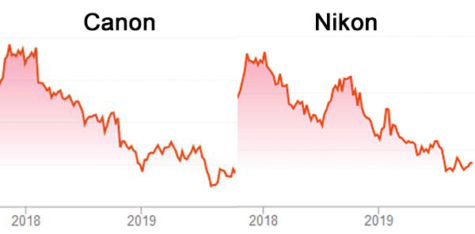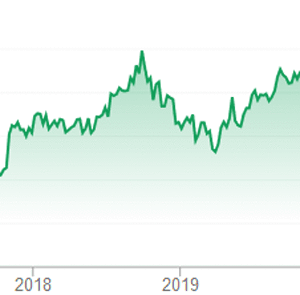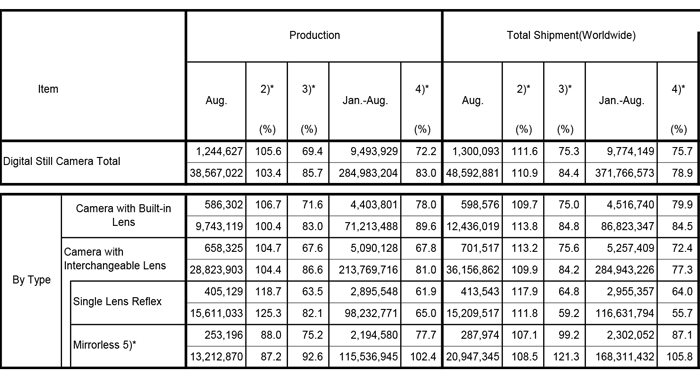Canon’s announcement this week that it intended to release a new professional DSLR at some time in the indeterminate future and at an unspecified price drew a large response from readers of websites like DPReview – where there were over 1000 readers comments – and Petapixel.
‘This proves the DSLR is alive and well,’ said some pundits. ‘Mirrorless cameras have made even good DSLRs like this one redundant,’ said others. ‘Mirrorless cameras are fine, but no-one is making professional mirrorless bodies as rugged as the 1DX,’ said a third group. ‘I own five Nikon professional camera bodies, and $100,000 worth of lenses. I know everything about photography and I have a large penis,’ (or words to that effect) said the worryingly large cohort of jocks who seem to lurk around camera hardware websites looking for fights to pick.
But at the end of the day, the shareholders are more important to the financial health of Canon and Nikon than the fanboys on Petapixel.
The EOS 1DX III could be the best DSLR Canon has made (I honestly wouldn’t have a clue) but the features and benefits of one exceptional DSLR won’t make much difference to the company’s financial fortunes at a time when the market is clearly shifting to mirrorless cameras. Likewise, Nikon’s latest uber-DSLRs, such as the D800 and D750, have had fabulous reviews and are rated at the top of the heap in DxO’s image quality bench tests, but they not generating rivers of gold. Neither of these companies are in the kind of financial shape they need to be to tackle the existential threat posed by the tricky transition to mirrorless and the relative newcomer, Sony.
Nikon seems to be more aware of its precarious position, making dramatic changes in 2017 after big losses in the previous year, including a restructure and a major program of voluntary redundancies, abandoning the much-touted DL premium compact series ‘due to concerns regarding their profitability’ stepping away from most (low-margin) compacts and focussing much more sharply on cameras which make a profit. From a product portfolio point of view as well as financials, it seems to be in a better position than Canon, whose management seems thoroughly dispirited by its camera business and can’t seem to see anything but more pain in the future, judging by executive comments accompanying the last couple of financial statements.
Here’s a look at the share price of Canon, Nikon and Sony respectively over the past 2 years or so:
 In this period, Canon’s share price peaked around the start of last year at roughly 4400 yen and since then its been on a clear downward trend. Current price is 2900 yen and over the last 12 months the price has moved between 3340 and 2688 yen. The EOS 1DX III announcement made no difference whatsoever to the share price.
In this period, Canon’s share price peaked around the start of last year at roughly 4400 yen and since then its been on a clear downward trend. Current price is 2900 yen and over the last 12 months the price has moved between 3340 and 2688 yen. The EOS 1DX III announcement made no difference whatsoever to the share price.
Compounding the drop in value of the business is its practice of paying a handsome dividend to shareholders, currently at around 5.5 percent. It’s a dilemma because if a business withdraws its customary dividend, especially when the share price is falling, it’s in danger of having its shares sold off and being drawn into a downward price spiral. (I have a pet theory that this dynamic had a greater impact on the demise of Kodak than its given credit for. For several years, Kodak was borrowing billions of dollars simply to pay shareholder dividends in an effort to keep the share price up.)
The pattern at Nikon is remarkably similar. Share price rising and doing nicely up until the start of 2018 (2360 yen in early January 2018), but in the past 12 months swinging between 2080 and 1280 yen. Current share price is 1390 – like Canon, closer to the lowest share price for the 12 months than the highest. And once again, Nikon pays a blue-chip dividend of 4.3 percent, which it can ill afford, but probably doesn’t dare drop.
 Now have a look at the Sony share price (left). Admittedly, cameras are just a fraction of Sony’s business, but nonetheless cameras and image sensors combined are both important and profitable segments for the conglomerate. Sony’s share price was around 5500 yen in early January 2018. In the past 12 months it has moved between 4500 and 6600 yen and is currently 6488 – unlike Canon and Nikon, closer to its 12 month peak than its trough.
Now have a look at the Sony share price (left). Admittedly, cameras are just a fraction of Sony’s business, but nonetheless cameras and image sensors combined are both important and profitable segments for the conglomerate. Sony’s share price was around 5500 yen in early January 2018. In the past 12 months it has moved between 4500 and 6600 yen and is currently 6488 – unlike Canon and Nikon, closer to its 12 month peak than its trough.
And not only is Sony’s camera division increasing sales and profits, but it pays a miserly dividend of 0.54 percent – less than one-tenth of what Canon shells out. Shareholders have to be content with owning shares which are growing in value. Profits are able to be churned back into the business – into R&D, marketing and the like.
So here we have one business which has moved much faster than its main competitors into mirrorless cameras, to establish itself as the leader in what is the replacement technology for DSLRs for the vast bulk of the market. Until the launch of the Canon R and Nikon Z series at the end of last year, Nikon and Canon were focussed on not cannibalising their large DSLR market shares, but only managed to bring out mirrorless cameras which the market doesn’t seem to have wanted.

Above are the latest CIPA camera shipment figures: Dividing the market into compact cameras, DSLRs and Mirrorless cameras, the largest segment today is compacts, shipping 4.5 million units up until August this year. Second is DSLRs, shipping 2.9 million and a close third is mirrorless, with 2.3 million shipped. But when it comes to value, mirrorless cameras account for 168 trillion yen, DSLRs 117 trillion yen and compact cameras just 87 trillion yen.
All the shipment figures are well down on 2018 figures – except for one: While there are around 13 percent fewer mirrorless cameras shipped to August this year than to August last year, their value is actually six percent up on 2018 levels. So fewer cameras shipped but more dollars flowing in. That looks like the segment of the camera business to fish in.





Be First to Comment